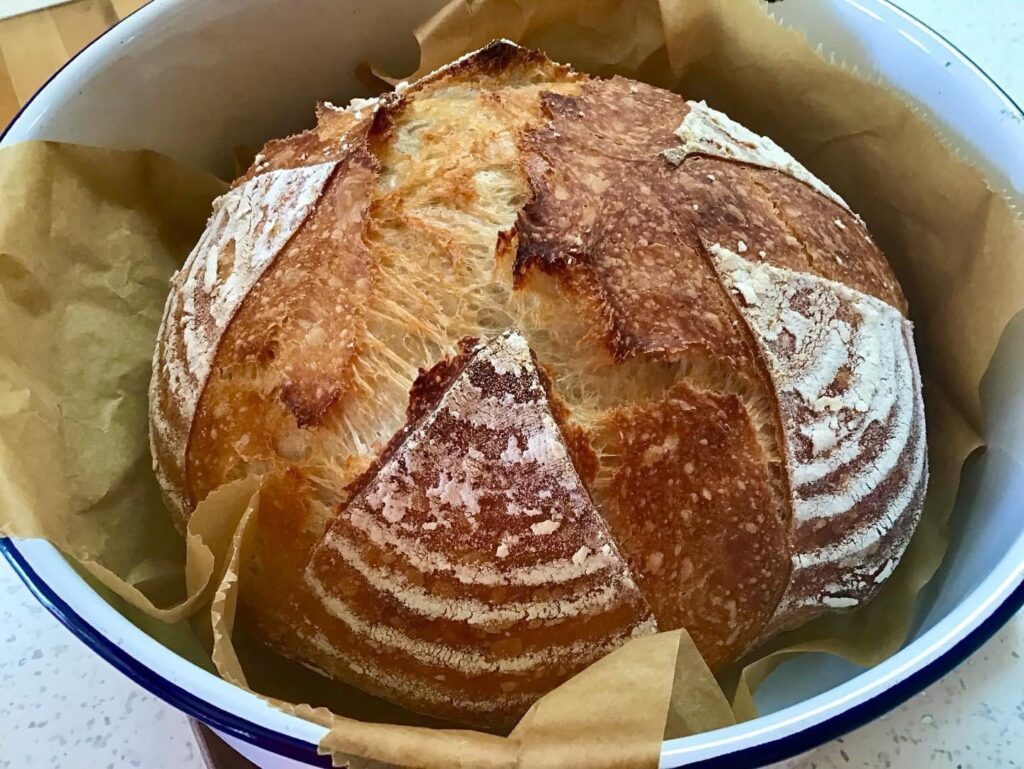
If you’ve ever wondered if you can freeze your dough, this post is for you. Or you’ve ever thought that a dough is just never going to do anything in cold weather, or if you’ve ever assumed that sourdough has to take control of your life with its timings, this post is for you…
Let me explain…following a course last year, I had two bowls of dough that had had their first initial mix, a rest, two sets of pulls & folds & had been sitting around for a few hours. I knew I wouldn’t be able to bake them the next day, so I decided to test the idea of freezing the dough as I’ve been asked about this many times.
I gave both doughs another round of pulls & folds, pulling them both into very tight balls then put them into small containers with tight fitted lids & into the freezer.
A few days later, I took them out & set the bowls on the side; as they started to slowly warm up I was eventually able to turn the doughs out into bigger bowls, covered with shower caps. It took several hours for each dough is to fully defrost, I gave them both a couple of sets of pulls & folds once they had, & left them on the counter overnight to prove again.
It was a cold day, followed by a very cold night, plus the dough had been very cold to begin with, so it took a few more hours than usual to fully prove, but they did and they did fill the bowls as they always do; I then put them into bannetons & into the fridge. This was now mid afternoon & as a result of life happening, they ended up being in the fridge until the next morning when I could finally bake them.
This loaf above shows the outcome of one of them, the other one I turned into rolls. And both doughs behaved and baked perfectly, the baked outcomes were light and fluffy and oh so tasty!

So as you can see there are many morals to the story: firstly that you can freeze dough at any point along the way, just allow it enough time to warm up again to continue with the process; that sourdough is forever & endlessly forgiving; that sourdough does not have to dictate to you & you do not have to jump to its tune; that we can make sourdough making & baking as simple as we need it to be.
Happy baking!
